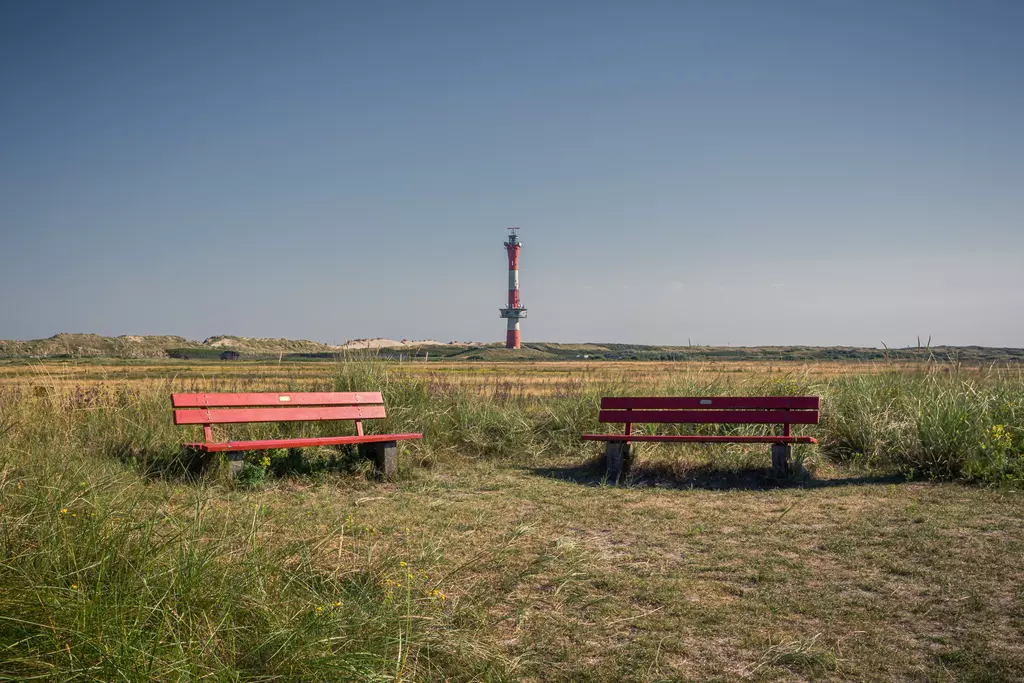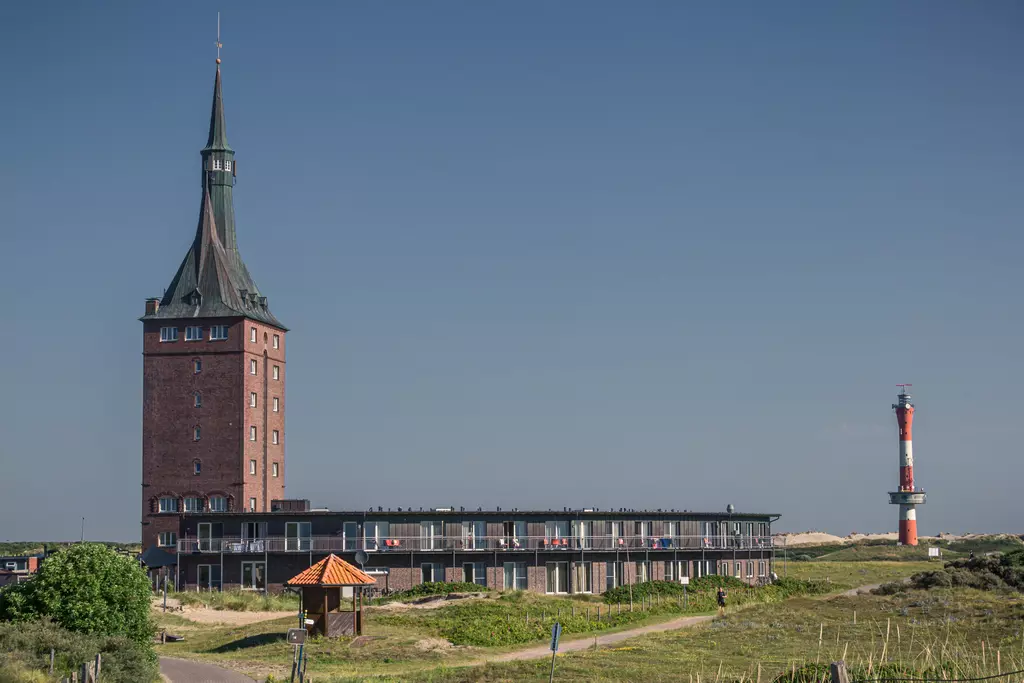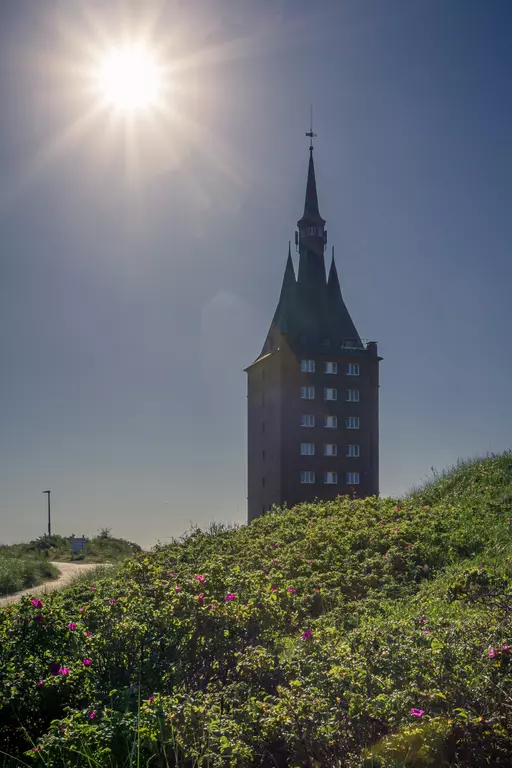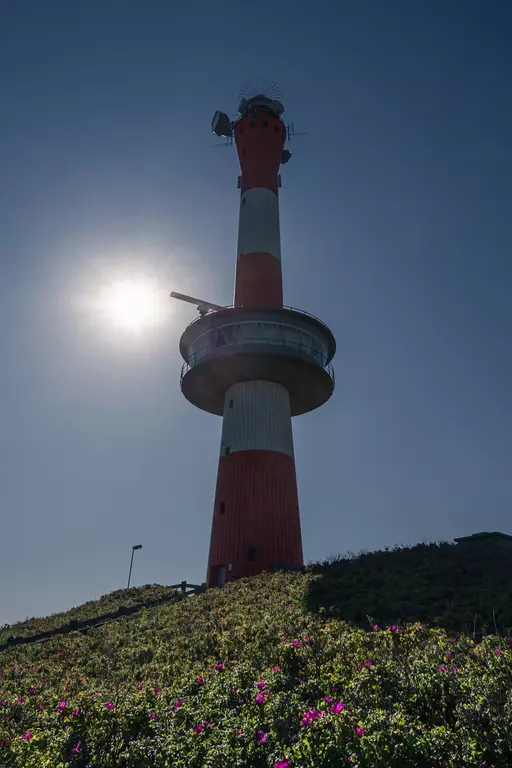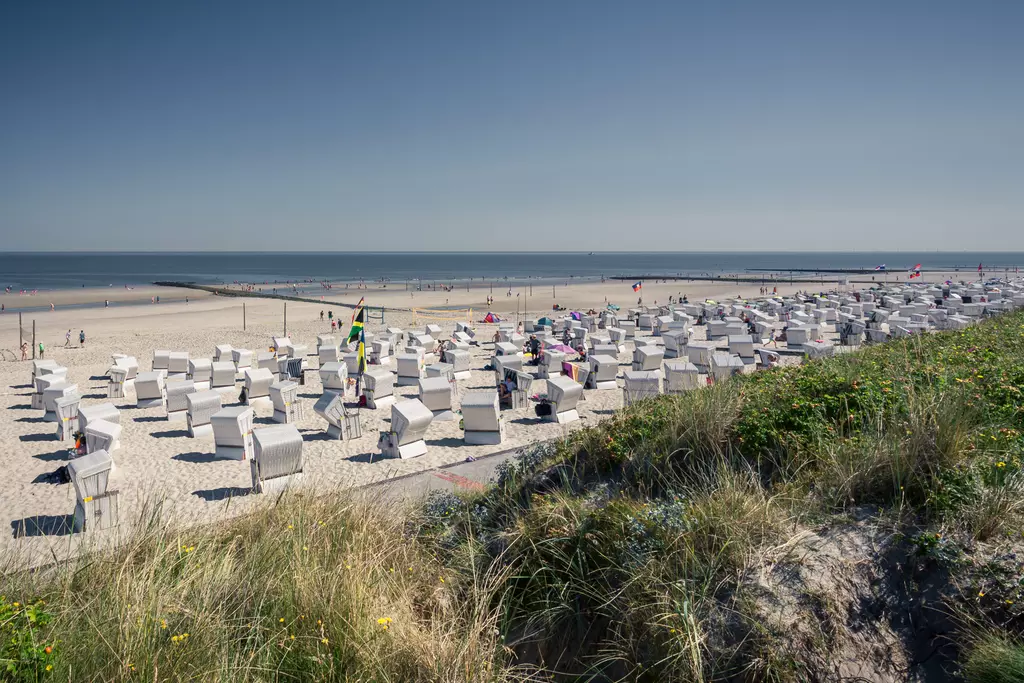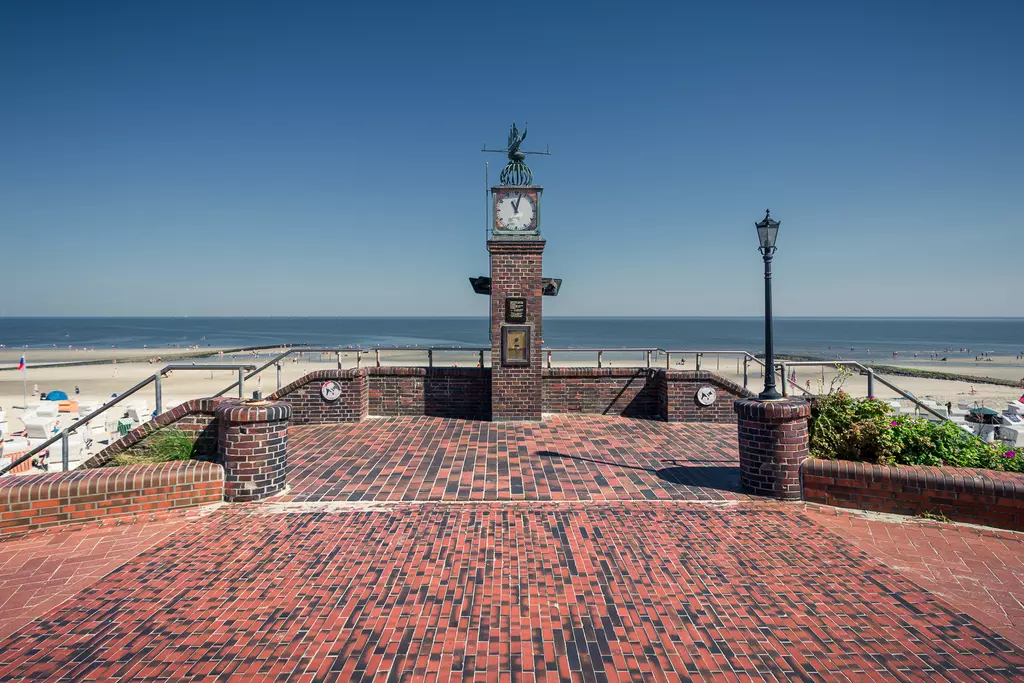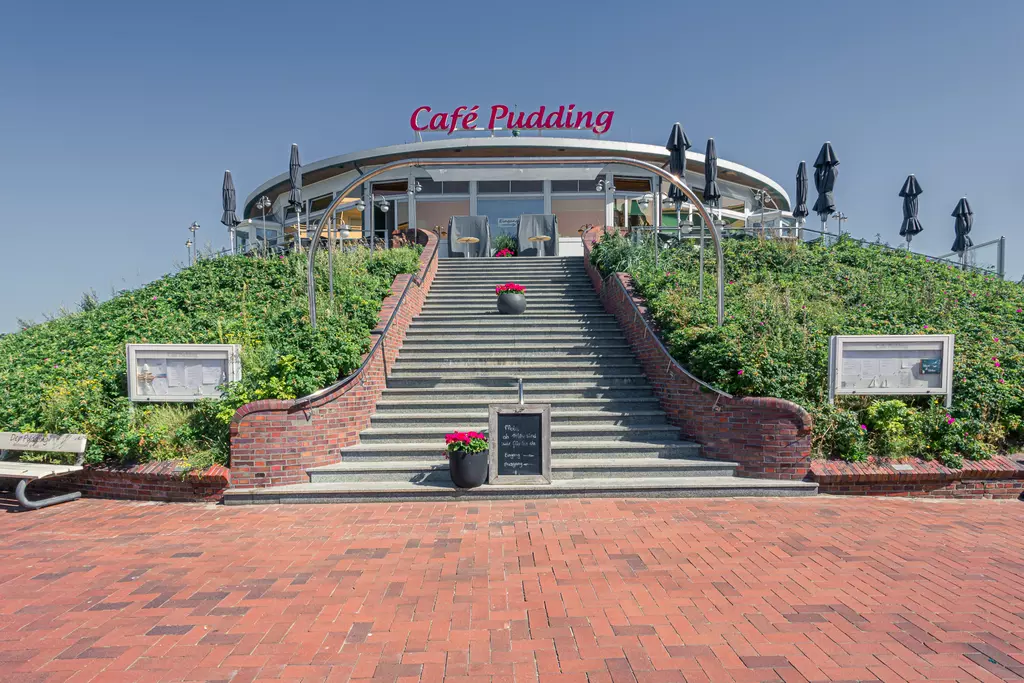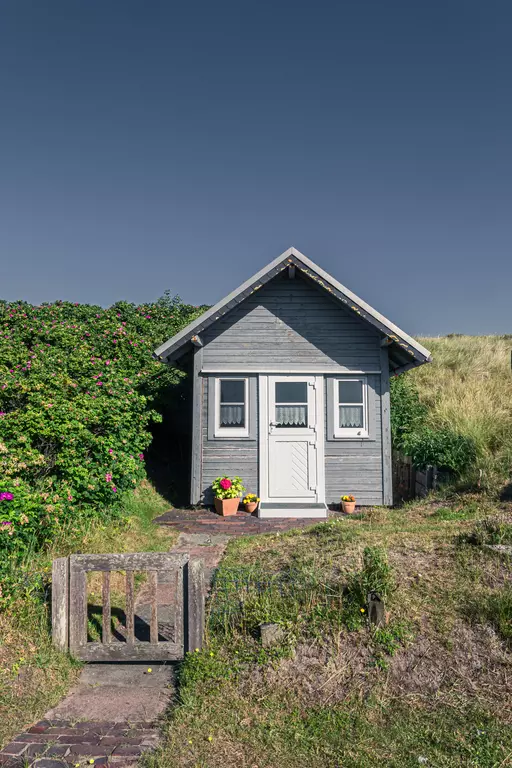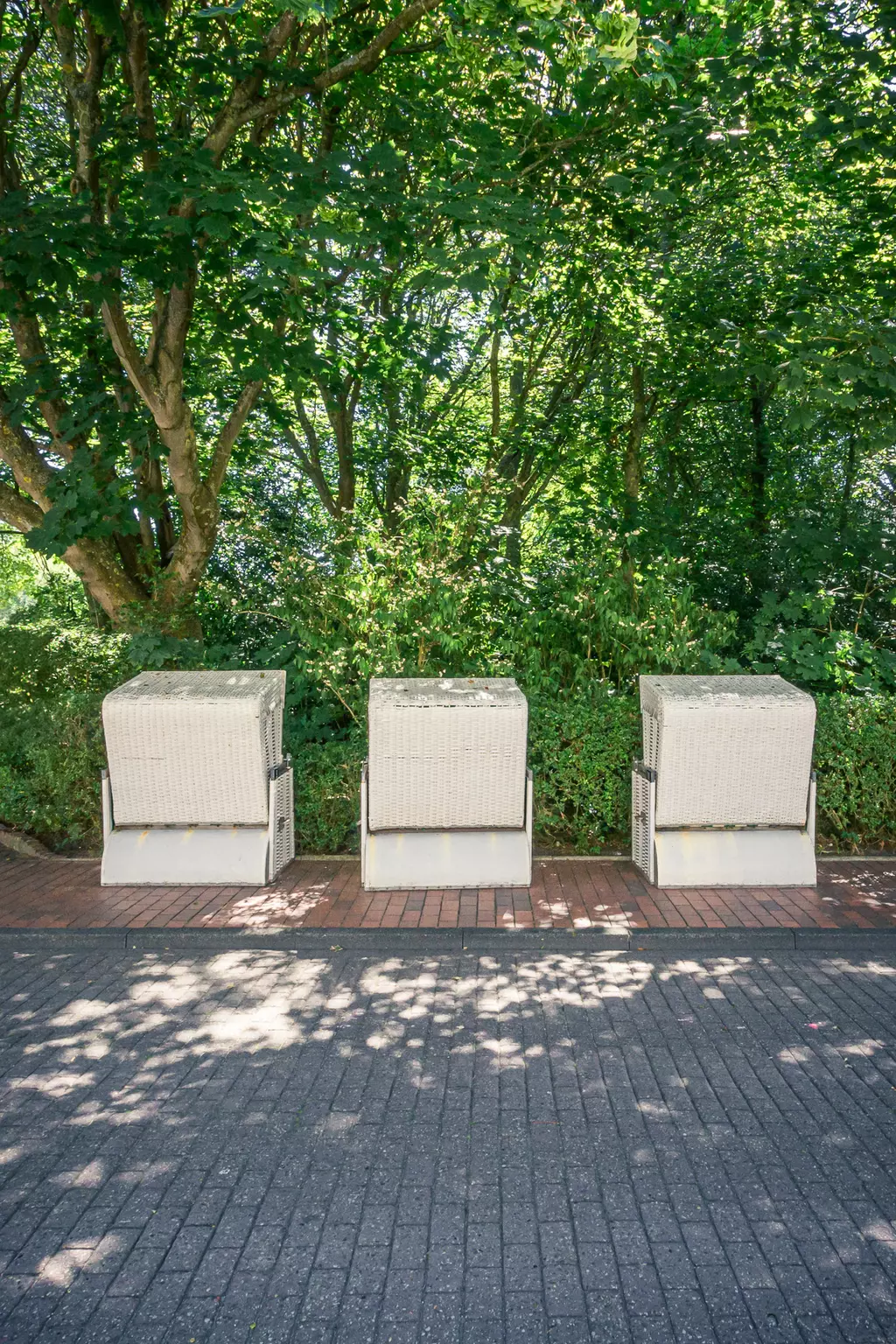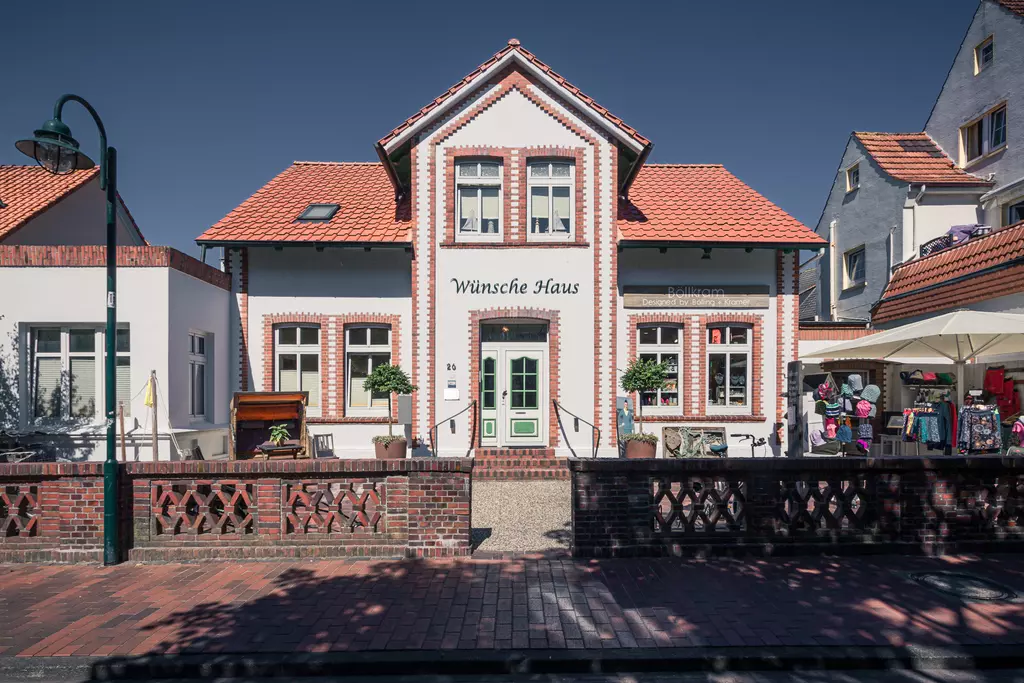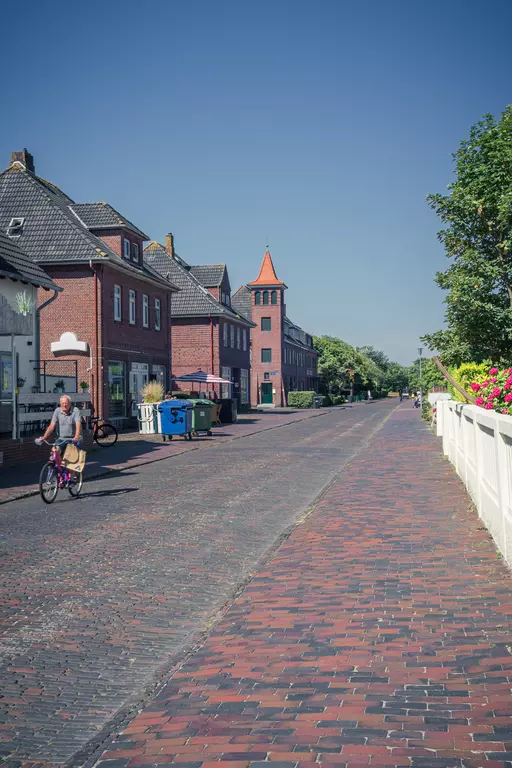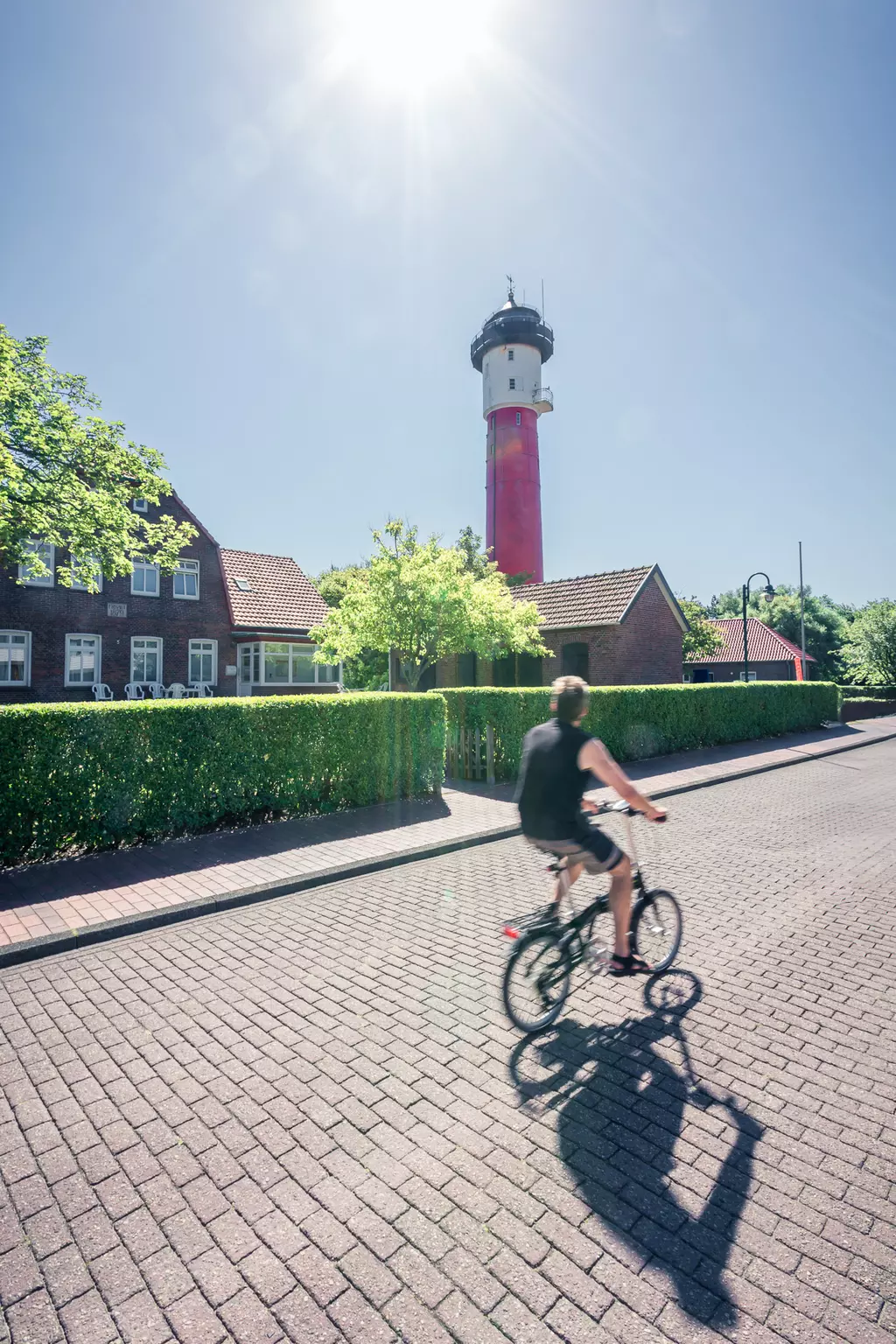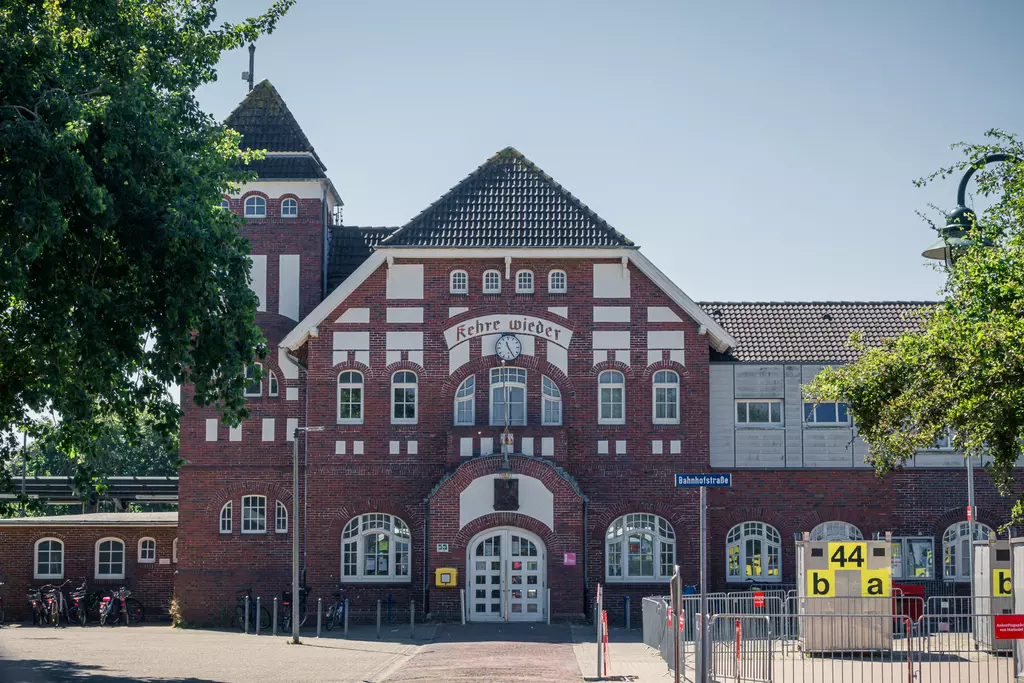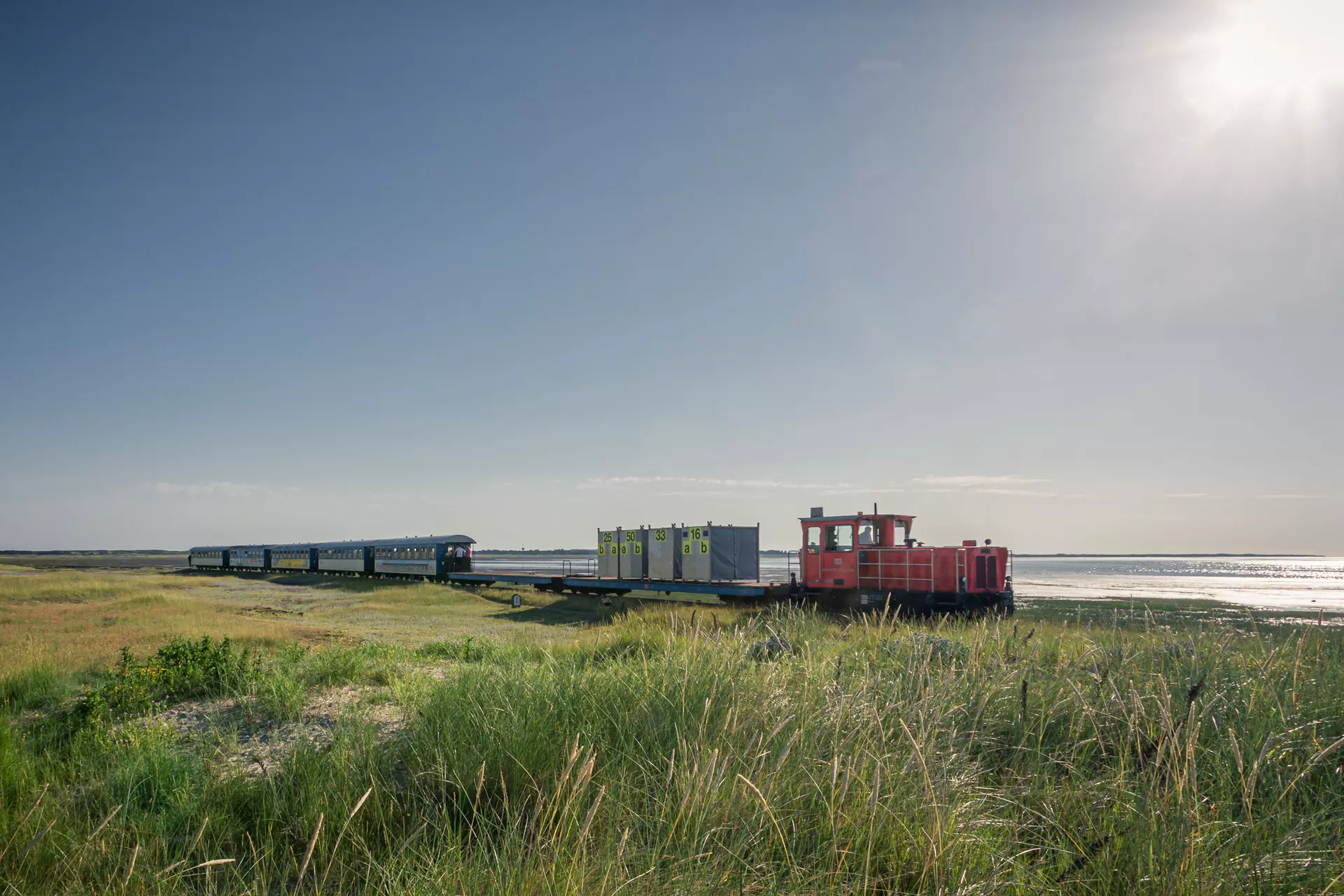Wangerooge, Germany, July 2022
Wangerooge, Germany, July 2022
Arriving on Wangerooge, you have a choice to make: take the leisurely train ride or take a leisurely walk. I opt for the latter and set off on foot from the ferry dock, following the nearly five-kilometer path to the village. The red-brick path leads past Germany’s tallest lighthouse (67 meters) and Germany’s tallest youth hostel (56 meters), housed in the so-called Westturm and the surrounding buildings.
By the time you finally reach the village, you could stop at Café Pudding—a former World War bunker turned café—for ice cream and cake. Or you could head straight to the beach, stroll along the promenade, or climb the old lighthouse for a panoramic view. But I did none of that.
On the façade of the island’s train station, the words "Kehre wieder"—"Come back"—are painted.
That I might do.


